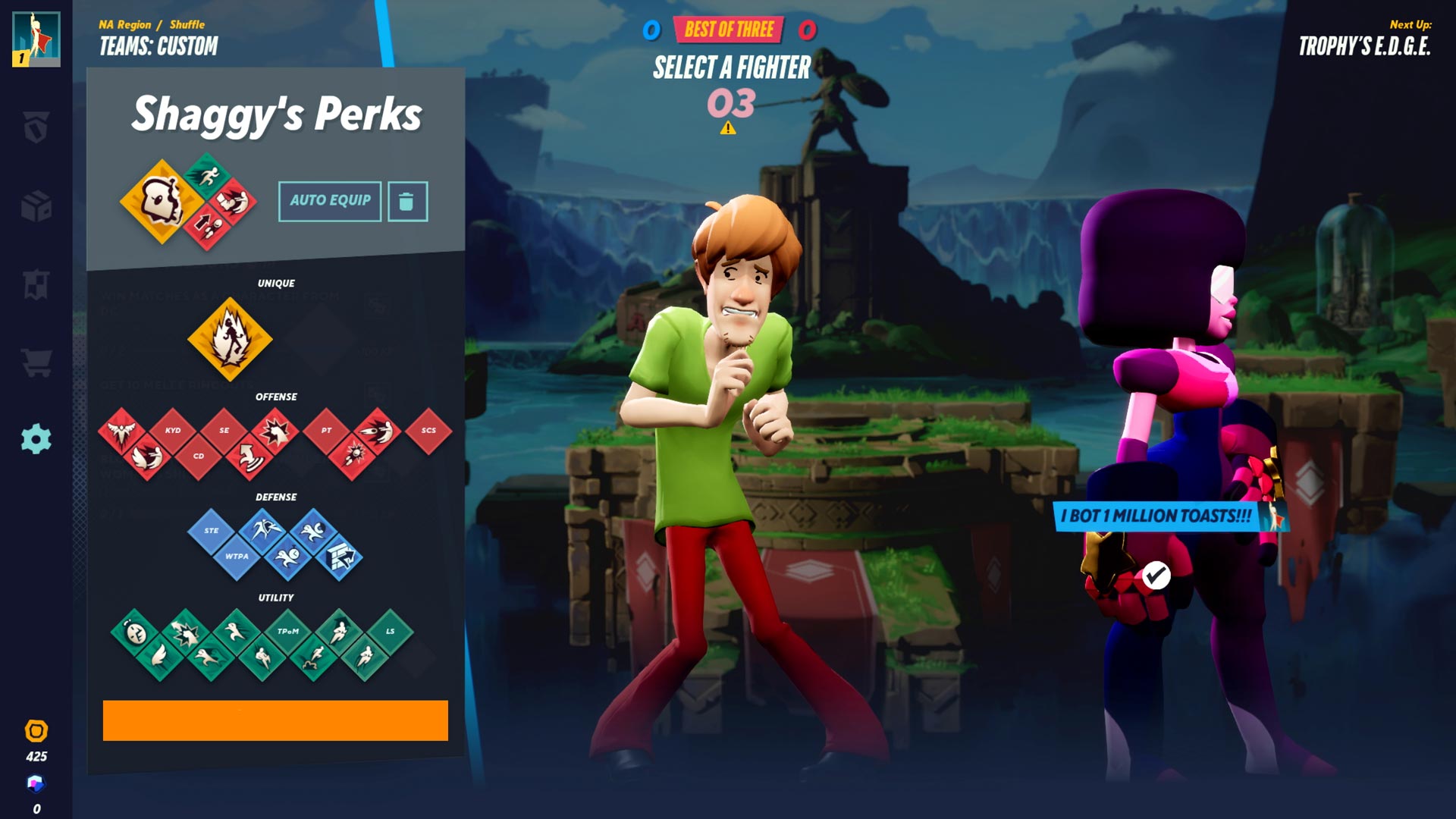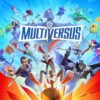It’s bizarre to think that just nine months ago, MultiVersus leaked. A seemingly random collection of characters from Warner Bros. wide range of properties, it was hard to not write it off as a cynical Smash Brothers cash-in. Following several leaks and an early preview several months ago, MultiVersus is finally here. And while I was wrong about quite a few things from my initial impression of the reveal, it’s easily one of my most played games this year.
At first glance, you’d be forgiven for assuming MultiVersus was a clone of Super Smash Bros. The premise is remarkably similar – four players enter an arena and battle it out until nobody is left. The damage system is identical, too, with higher damaged enemies flying further when attacked. Flying out of bounds of the arena results in death and a point scored to the other team. But that’s where the similarities to games like Brawlhalla and Super Smash Brothers end – there’s a wealth of options in MultiVersus whether you’re playing with someone or solo.

When I previewed the game a few months ago, I was taken aback by how similar the game was to other successful service games like Apex Legends, Fornite and even Fall Guys. I even expressed some concern about the pace that you progress through the game. There are heaps of tasks to undertake to unlock currency, which can be used to purchase characters and cosmetics. As someone who lived through the first six generations of gaming, I will forever be skeptical about games that hinge their progression on lengthy time commitments from the player. But after two to three hours with the game, I had enough to unlock another character which felt reasonable given that the game is free to play.
Now that I’ve clocked over thirty to forty hours of the game across multiple platforms, I’m inclined to say that MultiVersus is a pretty good time and value for players. So far, there are around sixteen characters, and each has had so much love and care put into them that I can’t help but be excited to see who the team brings to the fold next. My favourite is still Velma, who fights with speech bubbles, calculations, and idea light bulbs. But other characters like Bugs Bunny play true to their Looney Tunes origins with over-the-top, brash cartoony special moves that add to the chaos of the fight. It’s a well-varied roster with a surprising amount of depth that I absolutely adore.

Similarly, the game still plays as well as I played it several months ago. It’s incredibly fast-paced, but at the same time, the controls are tight enough that it doesn’t feel slow or floaty. While not as tactilely satisfying as Smash Brothers, the heft of the attacks makes the game feel expensive. That might be a bizarre term to use. Still, the dedication to ensuring MultiVersus has a solid fighting engine and mechanics to build upon by the developer will surely pay off in the long term. It, quite simply, is one of the best-feeling platformer fighter I’ve played.
But perhaps the only barrier to my enjoyment was my initial expectation with MultiVersus. It’s most definitely not to be played or experienced like Smash Brothers. Whereas Smash Brothers has a shallow skill floor and mechanics that mean you can achieve basic competence with any character, MultiVersus almost demands you pick a main and stick with them for a bit. The depth of each of the characters’ move suites is so vast that, like other competitive fighting games, you’ll get the most out of it if you learn the ins and outs of a single character.

The most unique thing about MultiVersus is that the game is ostensibly designed around it’s primary mode – 2v2 teams. The characters in the game all have moves that usually have some kind of benefit to the team. Velma can buff her teammates she hits with her attacks but similarly debuffs an enemy if those attacks land on them instead. The all-original character Reindog can tether themselves to their teammate and pull them in should their teammate be in peril, though anyone touching the tether in the meantime still takes damage. Wonder Woman can even shield her partner from attacks. They’re all great touches that make this game feel like something more than the other platformer fighters on the market.

It’s the sense of team that really brings MultiVersus to life. The best matches I’ve had are the ones I play with friends – and while they’ve not all been well versed in how to use the buddy abilities – it’s been a real joy to either be saved or save them from danger at the end of a very dicey match. Other modes are on offer here, including a free for all mode that introduces items, but given how chaotic things get during 2v2, I found just throwing something else into the mix makes things even more so. Still, it’s an excellent option and one that I’ve especially enjoyed playing locally. I have and will continue to enjoy 2v2 when playing online, personally.
I’ve briefly touched on the nature of character unlocks, but everything else operates slightly differently. While I think the progression required to unlock characters feels adequate, the progression for everything else feels slow. To compound this, there doesn’t look like a lot to unlock or work towards in the current season pass. This is something that I’m almost certain will improve with time, but right now (besides characters themselves), things unlock slowly, and there isn’t a whole bunch to unlock. Skins are expensive too, but this is no different from other games of this ilk – they offer nothing of value in terms of gameplay and can be easily ignored.

A word of advice is that you can access any of the characters in The Lab offline. Think of it as a try before you buy system and one that I implore you to engage with before spending your precious gold., especially for some less conventional fighters like Arya or Tom & Jerry.
From a presentation aspect, MultiVersus is a great-looking game too. It boasts some rock-solid performance, and the art direction is similarly fantastically consistent. I’m genuinely excited to see how the developers will bring in other characters from more realistic franchises and match them to the art style of the roster here. If Arya Stark and LeBron James are indications, it’ll be incredibly executed. While the characters and art direction are great, the same can’t be said for the levels. While they’re all different locations, MultiVersus definitely has a variety of problems with its arenas that I can only hope will be fixed with future updates.

But perhaps the most prominent aspect that sticks out as being incredibly lacklustre is the music. Where there are so many fantastic franchises to pull some incredible music from, MultiVersus instead offers up dull and generic music that does little to inspire or motivate. It feels like the music you’d hear at a low-rate theme park rather than an inspiring medley of themes or motifs. Once again, I can only hope it improves as time goes by, but for now, it’s sorely lacking.
While it’s clear that some things need work on MultiVersus, it’s encouraging to see that the things that truly matter – the unlocking of characters and the core gameplay systems – are the things that have received the most attention. These are easily the two strongest tenets of MultiVersus’ offerings thus far. With time, I can only hope that the lack of variety in levels, lacklustre music, and slower cosmetic offerings can be remedied.




